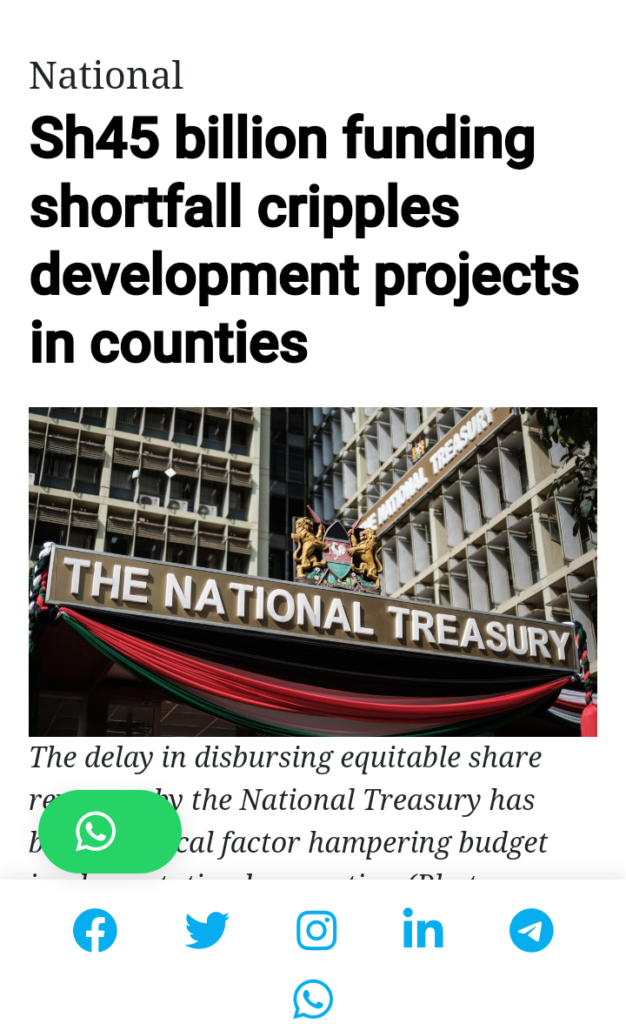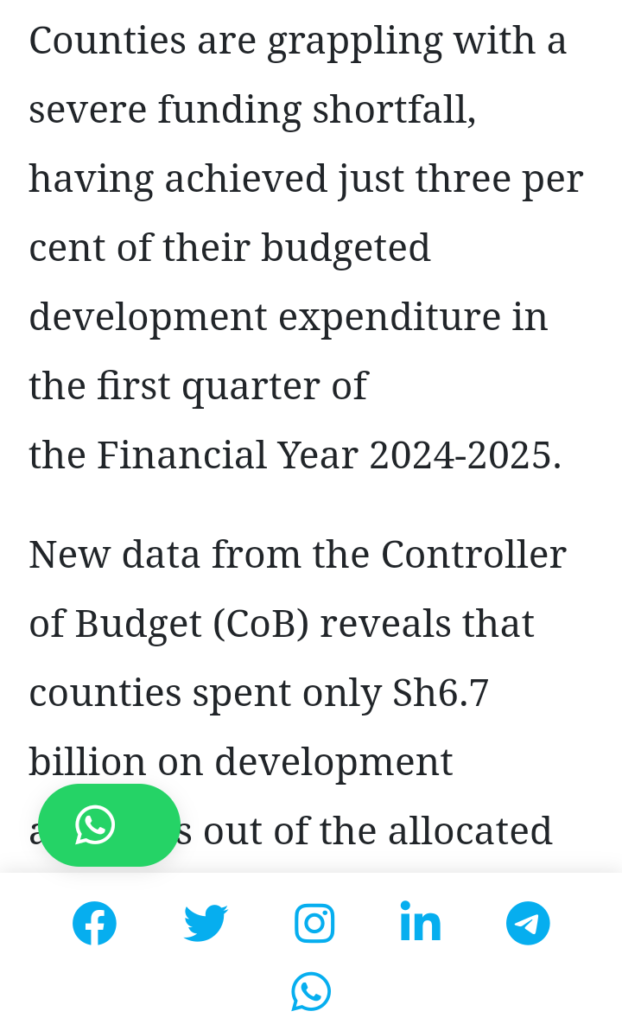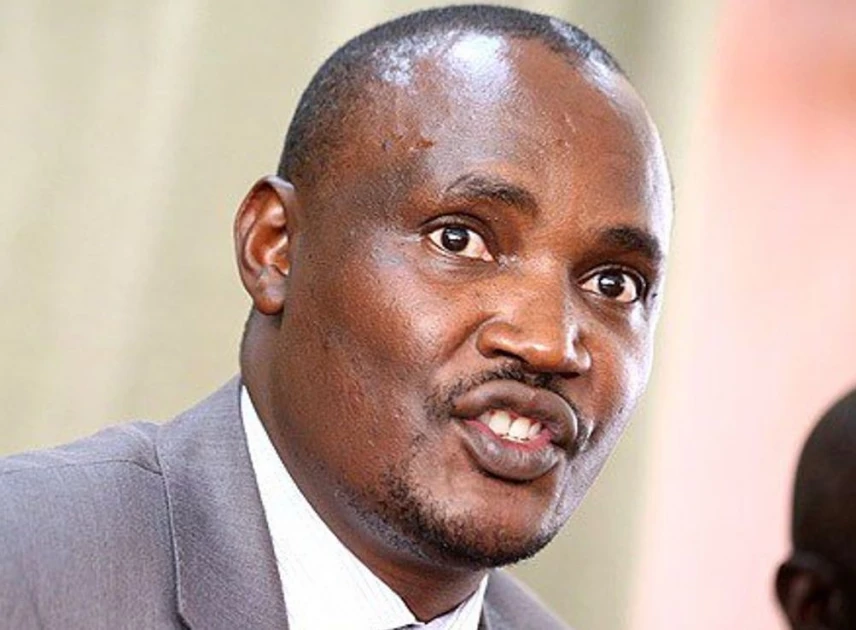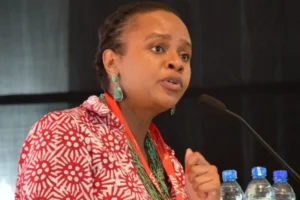Counties across Kenya are facing a serious financial crisis, with new data from the Controller of Budget (CoB) exposing a dismal performance in development spending.
In the first quarter of the Financial Year 2024-2025, counties managed to spend only 3% of their budgeted development expenditure, highlighting a dire funding shortfall.
Out of an allocated Sh205.3 billion for development, counties spent a mere Sh6.7 billion, leaving a Sh44.6 billion deficit in just three months.

This alarming trend raises critical concerns about the ability of county governments to meet their development goals and provide essential services.
The law requires counties to allocate at least 30% of their budgets to development, yet only 12% of their total expenditure in the first quarter was directed toward development projects.
This marks a decline from the 4% absorption rate recorded in the same period of the previous financial year.
The persistent failure to meet legal spending thresholds suggests deep structural problems in fiscal management and planning at both the county and national levels.
A major contributor to this crisis is the National Treasury’s delay in disbursing equitable share revenues.
By the end of September, the Treasury had only released Sh32.7 billion out of the Sh380 billion budgeted for the fiscal year, leaving a staggering Sh62 billion undisbursed.
This shortfall has paralyzed county operations, forcing many governments to prioritize recurrent expenditures like salaries over development projects.
Additionally, underperformance in local revenue collection has further worsened the financial strain, leaving counties with little room to maneuver.
The implications of these funding gaps are profound.

Counties are now under immense pressure to spend Sh521 billion in the remaining nine months to meet their annual targets.
This task appears almost impossible given the ongoing delays in Treasury disbursements and the lack of adequate revenue streams.
If this trend continues, many counties risk grinding to a halt, with stalled projects and unfulfilled promises to residents becoming the norm.
To make matters worse, the CoB flagged ten counties, including Baringo, Elgeyo-Marakwet, Kajiado, Kisii, Lamu, Nairobi City, and Nyandarua, for reporting no development spending at all during the quarter.
This inaction not only highlights poor planning and oversight but also underscores the mismanagement and neglect that have become hallmarks of county governance.
Residents of these counties are left to bear the brunt of failed leadership, as critical infrastructure projects and services remain unaddressed.
The current state of county finances is a damning indictment of both national and county governments.
The Treasury’s delays, combined with counties’ inability to effectively plan and execute their budgets, reflect a leadership crisis that is failing the very people it is meant to serve.
If no urgent measures are taken, the dream of devolved governance delivering tangible benefits to Kenyans will remain just that a dream.





















Add Comment